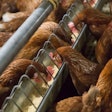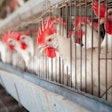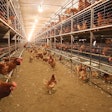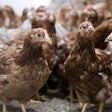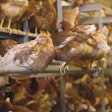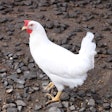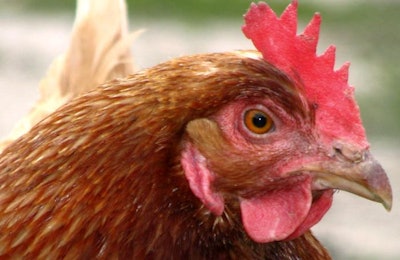
South Korea’s president has urged the authorities to take a new approach to controlling highly pathogenic avian influenza (HPAI) after the disease returned to the country’s poultry sector last month. Further outbreaks of the disease are also reported in Taiwan. There are also new human cases of avian influenza A (H7N9) in China.
Outside Asia, Luxembourg has reported its first HPAI outbreak in poultry for 60 years, and there have been further cases in Russia and Bulgaria.
Asia: South Korea, Taiwan battle to control HPAI
South Korea’s agriculture ministry has reported to the World Organisation for Animal Health (OIE) a further five new outbreaks of HPAI caused by the H5N8 virus. Affecting four farms and one backyard flock, the losses amount to more than 23,300 birds. Two of the outbreaks are on Jeju, site of the previous cases, but others are widely spread across the country in the provinces of North Jeolla and Gyeonggi, and the city of Busan.
Last week, President Moon Jae-in criticized the government’s first response to the return of HPAI and called for “real and fundamental solutions,” reports Yonhap. There have been 11 confirmed HPAI outbreaks in the last month. According to the news agency, the agriculture ministry is considering the closure of the country’s 200 live birds markets, after last week imposing a ban on all movements of poultry and related vehicles and farm workers.
Taiwan has been battling HPAI in its poultry sector since early 2015, and its animal health authority has confirmed a further six new outbreaks in poultry caused by the H5N2 virus to the OIE in the last week. A total of almost 65,800 ducks and chickens – both native and global strains – were lost to the disease as a result in the counties of Yunlin, Pingtung, and Changhua. The H5N8 virus was detected in chickens tested at four slaughterhouses in the cities of Taipei, New Taipei and Kaohsiung, leading to the loss of a further 667 birds.
Torrential rains last week have caused widespread damage and huge losses to agriculture, reports Focus Taiwan. Hardest hit was Yunlin county, location of multiple HPAI outbreaks in poultry, adding to the challenges of producers there.
China reports new human cases
New information from the World Health Organization (WHO) bring the total number of confirmed human cases of avian influenza A (H7N9) to 1,512. In two reports, the National Health and Family Planning Commission of China records 26 new cases between April 29 and May 25, including a first cases in Shanxi province. All but two of the latest cases are known to have had contact with live poultry.
Europe: First HPAI cases in Luxembourg
After an absence of six decades, HPAI has returned to Luxembourg. Four farms, all with mixed poultry flocks, were affected by the H5N8 virus after the introduction of new birds. The OIE report does not give complete figures, but 76 birds are reported to have died and a further 787 were humanely destroyed.
Bulgaria’s veterinary authority last week reported four outbreaks of H5N8 HPAI that occurred during March of this year. More than 240 birds died or were destroyed from the one commercial and three backyard flocks in the northwestern provinces of Vidin and Montana.
A backyard flock in the Russian republic of Tatarstan has recently been confirmed with the same virus, according to a report to the OIE.
Low-pathogenic avian influenza of the H5N3 subtype has been detected in France for the first time after a two month absence. Surveillance revealed the virus in a flock of ducklings in the department of Tarn-et-Garonne. The flock totaling 15,200 birds are scheduled for destruction. The location of the outbreak is in the south-west of the country, where there were many outbreaks of HPAI from November 2016, and where high biosecurity measures were taken to prevent the re-introduction of the disease following depopulation of all duck and goose farms.
Following the latest outbreak of H5N8 HPAI in a flock of commercial turkeys in the province of Mantua in Lombardy, the Italian health authority has reported to the OIE that that same virus has been detected in a sick water bird found nearby.








